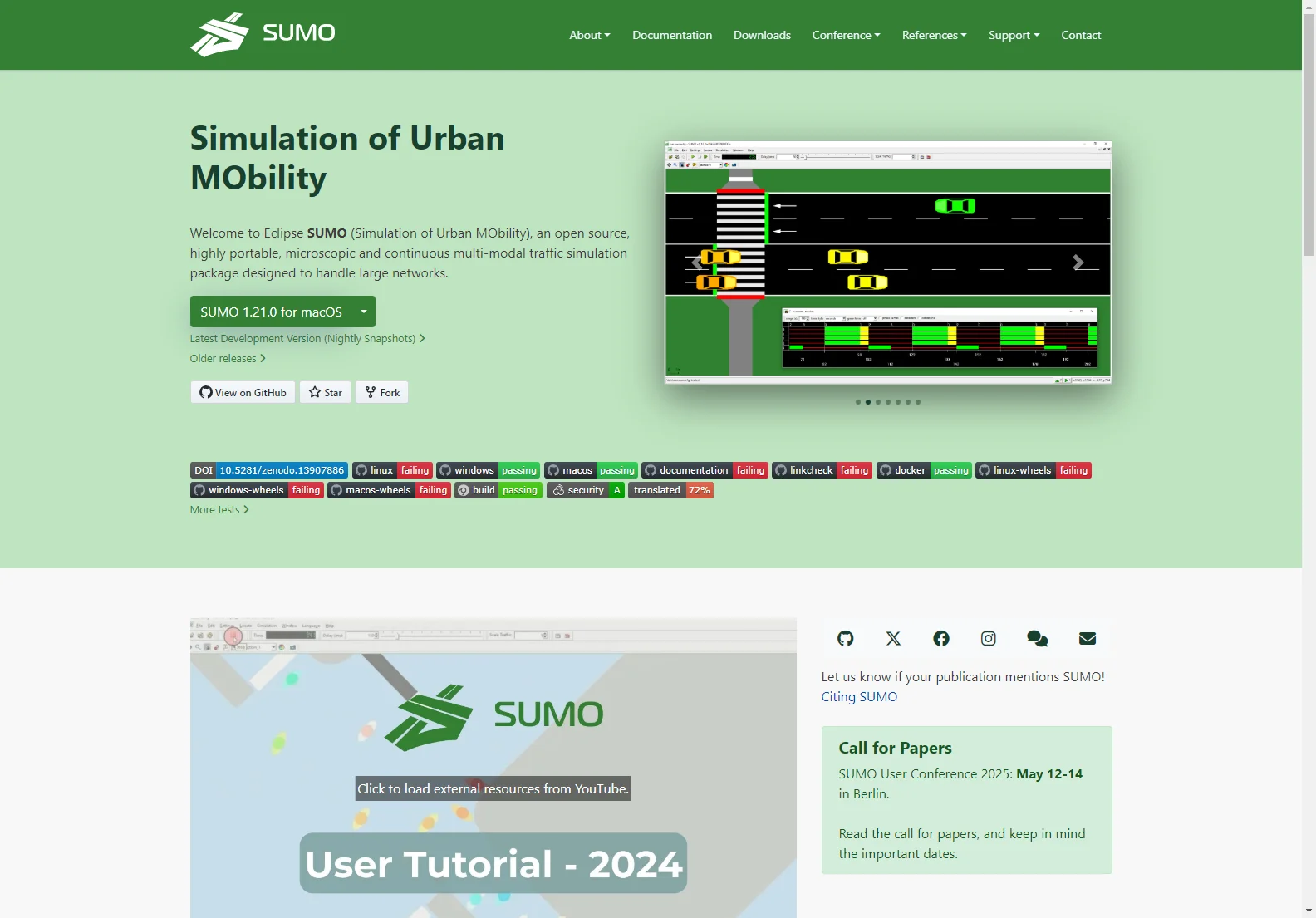Eclipse SUMO: Revolutionizing Urban Mobility Simulation
Eclipse SUMO, short for Simulation of Urban MObility, is a remarkable open source traffic simulation package. It stands out for its high portability, microscopic and continuous multi-modal capabilities, designed to handle extensive networks with ease.
Overview
SUMO 1.21.0 is available for various operating systems like Windows 64-bit, Linux, and macOS. It also offers the latest development version as nightly snapshots. With its ability to model intermodal traffic systems including road vehicles, public transport, and pedestrians, it provides a comprehensive view of urban mobility.
Included are a plethora of supporting tools. These handle crucial tasks such as route finding, visualization, network import, and emission calculation. Moreover, SUMO can be enhanced with custom models and offers different APIs for remote simulation control.
Core Features
- Automated Driving: SUMO allows the integration of automated vehicles in traffic simulations. You can equip these vehicles with a transition of control (ToC) device, enabling more realistic scenarios.
- Vehicle Communication: By coupling with communication network simulators like OMNeT++ or ns-3, it becomes possible to implement and evaluate C2X communication technologies.
- Traffic Management: Video detectors and induction loops can be modeled to manage traffic interactively. This includes controlling speed limits, traffic lights, and vehicle behavior.
- Microscopic Simulation: Every individual object's movement can be simulated explicitly by modeling all vehicles, pedestrians, and public transport.
- Multimodal Traffic: Different modes of transportation such as cars, buses, trains, bicycles, pedestrians, and public transport can be combined and simulated together.
- Online Interaction: The Traffic Control Interface (TraCI) enables the control of all simulation objects during a live simulation.
Basic Usage
To get started, you can import road networks from common formats like OpenStreetMap, VISUM, VISSIM, NavTeq, MATsim, and OpenDRIVE. Demand generation can be done using traffic counts on streets and junctions, origin-destination-matrices, or virtual population models.
Traffic light schedules can be modified visually with netedit, imported from external sources, or generated automatically. And with its excellent portability, you can use SUMO on different platforms including Windows, Linux, or macOS.
In comparison to some existing traffic simulation tools, Eclipse SUMO offers a more extensive set of features for handling complex urban mobility scenarios. Its open source nature also allows for greater customization and flexibility, making it a top choice for researchers, urban planners, and those interested in understanding and optimizing urban traffic flow.
